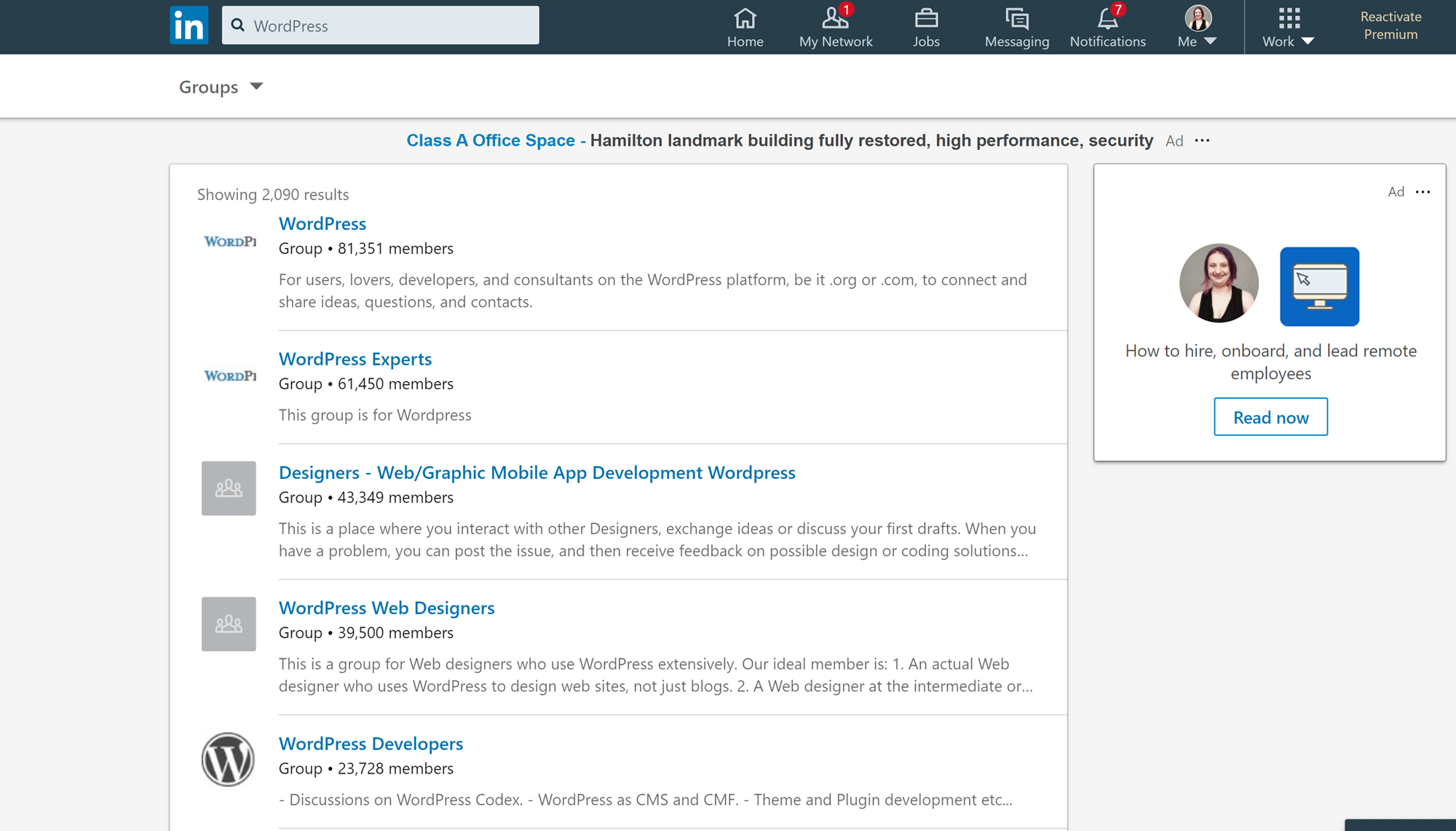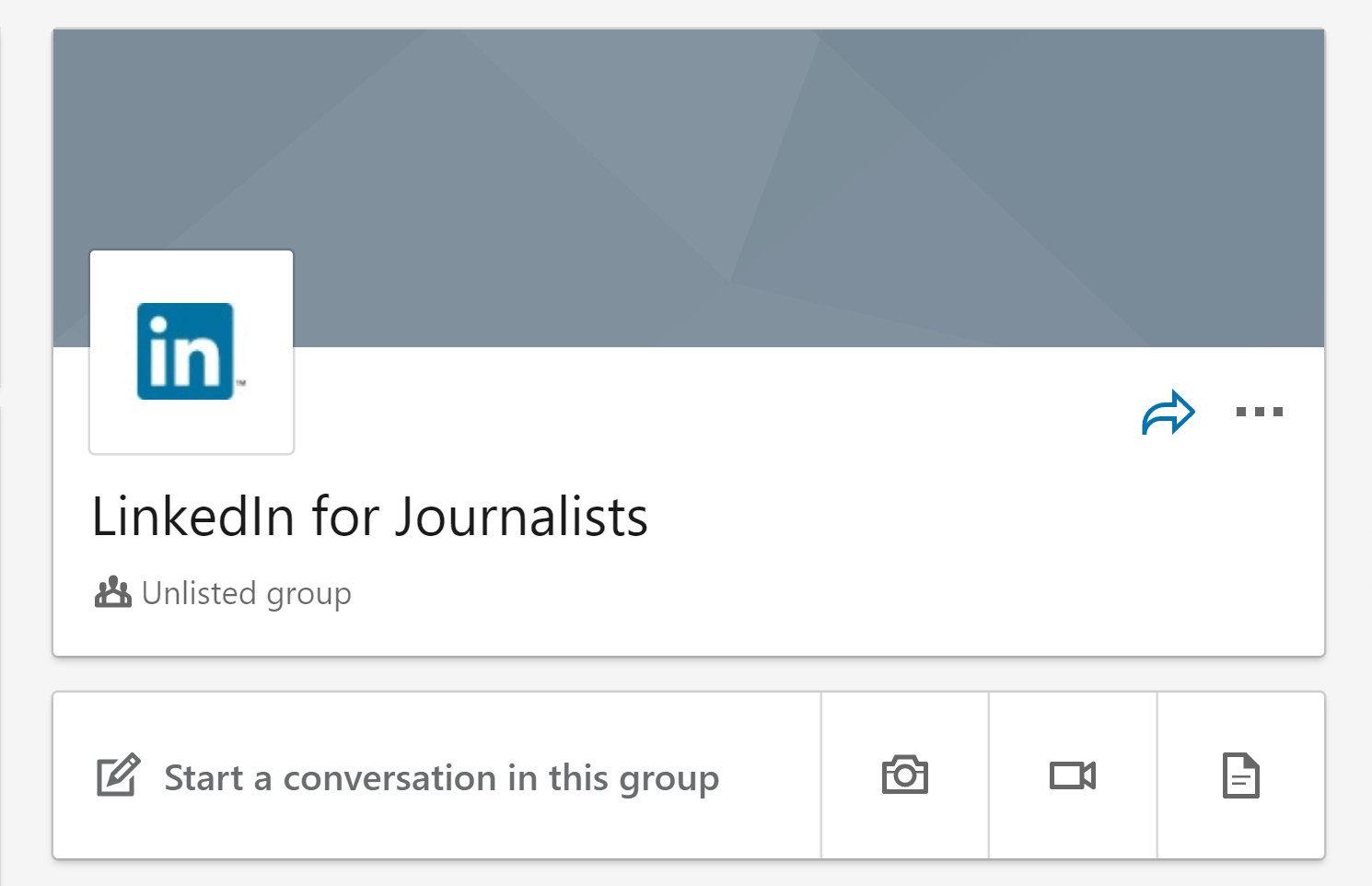LinkedIn is arguably the first name that comes to mind when discussing online corporate networking. Though you may be familiar with the platform on the whole, you may not be taking full advantage of LinkedIn groups.
This might not seem like a big deal, but more than half of LinkedIn users belong to at least one group and 42 percent consider group discussions to be helpful.
After a revamp in 2018, Linked groups became better suited for promoting content on social media. Users now get notifications for new group posts and relevant conversations are also highlighted. Features like these may enhance your engagement levels significantly, but you’ll still need some expertise to make the best of them.
In this article, we’ll show you why LinkedIn groups are an effective promotion tool and how you can use them to increase your social shares and engagement. Let’s get to it!
Why LinkedIn groups are great for promoting your content
For the uninitiated, LinkedIn groups are spaces dedicated to professionals in the same industry or with similar interests – interactive hubs where users can share content, find answers to questions, view and post jobs, and much more.
The basic idea behind LinkedIn groups is discussion and user engagement, rather than posting advertisements. Spam is the key factor behind the poor performance of unsuccessful LinkedIn groups. If you’re looking to successfully promote your content using groups, this is an important tip to bear in mind.
Let’s quickly take a look at some of the reasons why promoting your content with LinkedIn groups is a great idea:
- LinkedIn usage is increasing. With its entire membership now totaling 690 million users, LinkedIn has established its place in the corporate world. In 2020 alone, the platform has already witnessed more than 26 percent growth in its user sessions. With such figures, it’s clear that LinkedIn is the place to be for every business.
- Social media usage is now centered on follower engagement. Consumers are spending more time on social media than ever before. When you look closely, you’ll discover that this is down to the high engagement levels of social content. LinkedIn groups are an ideal tool you can use to drive niche-specific engagement to your benefit.
- You can use LinkedIn groups to enhance your credibility and increase your reach. By observing and driving conversations in LinkedIn groups, you can learn more about your target audience and offer them valuable content in return. In the long run, this will help you to build credibility and increase your business’ reach.
Understanding why LinkedIn groups are worth your attention is vital to using them correctly. As such, once you have this knowledge, you can begin to look at the practical ways groups can promote your content.
How to use LinkedIn groups for promoting your content (in 5 steps)
As you prepare to use LinkedIn groups to achieve your marketing goals, it’s important to remember that follower engagement is crucial. In other words, your approach to marketing must be completely native within LinkedIn.
The following five steps will help to make sure that your LinkedIn group strategy is fine-tuned enough to boost your content marketing success.
Step 1: Research and join LinkedIn groups with your target audience


The first important task you need to take care of is to find the groups where your target audience can be found. To do this, you have to decide on the audience you’re after. For example, are you looking to connect with peers, potential customers, or vendors?
You can consider a LinkedIn group as an opportunity to build your brand’s influence. However, your branding efforts will only pay off when you’re connected to the right people. In essence, you need to first consider how active your target audience is on LinkedIn.
Once you figure this out, focus on three to five groups that best represent your target demographic. These could even be groups you’re already a part of. However, it’s important to also spend time searching for a variety of new options. LinkedIn’s Discover Groups page can prove highly useful here.
Identifying your best opportunities also has a lot to do with group membership. It’s always advisable to join groups with an optimum membership size. Anything between a few hundred and a few thousand members should work just fine.
Step 2: Contribute to the most popular discussions in each group
Once you get into a new group, don’t be in a hurry to promote your content or share external links to your website. Ideally, you’ll want to dedicate your time to first interacting with existing content from other group members. On average, there are about 200 conversations occurring in LinkedIn groups per minute.
However, ensure to target the most popular or most engaging of these discussions. After all, you want to be visible to the highest number of people possible. LinkedIn makes it easy to locate the most popular discussions in any group by pinning them to the top of the page.
You can contribute to these discussions by offering insight, sharing opinions, or asking engaging questions. Likewise, liking and sharing these discussions with your existing connections can also increase your visibility on LinkedIn significantly.
Finally, it’s essential that your contributions to the groups are consistent and valuable. View each of your comments as an integral part of your branding strategy. The greater value you offer in these group discussions, the more members begin to recognize you as a thought leader within the group.
Step 3: Initiate discussions and position yourself as an industry leader


Once you settle into the group, the next thing to do is to initiate your own discussions. The main goal of each of your posts should be to showcase your expertise. However, while showcasing your expertise, it’s equally important to keep your discussion ideas as relevant and helpful as possible.
After spending quality time in the group, you ought to have an idea of the participants’ concerns, goals, and objectives. The discussions you initiate should attempt to address these crucial points.
Likewise, pay attention to some of the more interesting best practices for article success on LinkedIn. For example, include eight images in your articles. According to OkDork, LinkedIn articles featuring exactly eight images outperform others by far.
You should also consider including a small list and splitting your posts into between five and nine headings. Based on existing trends, these simple factors can go a long way in deciding how popular your posts will be with LinkedIn users.
Step 4: Follow up and connect with potential customers
If you’re participating in group discussions and initiating yours the right way, you should already be engaging with a good number of people by now. However, don’t let the interactions end in the group. Instead, add these users to your connections.
When you’re sending a LinkedIn invitation, make sure to be as deliberate as possible. Personalize your message, keep it concise, and let the user know the value you can offer them as a connection.
As we’ve already established, group participation also increases your visibility on LinkedIn. Consequently, other group members will send you connection requests as well. It is estimated that user profiles active within groups are viewed four times more than other profiles.
The more quality connections you have, the wider your content’s reach. Similarly, there’s almost no limit to your communication with your connections. You can make them offers and showcase your products and services by sending direct messages, sharing ideas in posts, and much more besides.
Step 5: Take advantage of useful LinkedIn group features
Thanks to their long battle against spam content, LinkedIn have consistently added new features to their groups. Though the majority of these features are directed towards helping group admins moderate posts, there are still a couple you can take advantage of.
For example, you can use LinkedIn group search extensive options to easily find comments and content based on keywords. You can do this right from the group’s home page, provided you’re a member of the group.
Likewise, you can share general information about your groups with non-members in your LinkedIn feed and private messages. In the same vein, you’ll get notified when there are new relevant posts in the group.
Group admins may also recommend helpful posts to other members of the group. This way, you get to always stay on top of all the best content and interactions in your LinkedIn groups.
How to create a successful LinkedIn group
To maximize the power of LinkedIn groups for promoting your content, you may want to consider creating your own. This lets you create a community centered around your brand and content.
Actually creating a LinkedIn group simply involves clicking a Create group button and filling in a form. However, this isn’t all to the success of a LinkedIn group. Here are some tips to consider when creating a LinkedIn group:
- Select a topic or theme your target audience is interested in. Before you begin, select a central topic that resonates with your target audience. This doesn’t necessarily have to promote your brand directly. For example, HubSpot’s LinkedIn Group is about inbound marketing. The main idea is that prospective group members should join the group based on their interest in the topic, rather than your company.
- Create message templates. Using custom message templates is a handy LinkedIn group feature that eases the process of managing your group and showcasing your brand’s tone. Templates enable you to send automated responses to people interested in joining your group.
- Invite your connections and promote the group. The fastest and most trusted way to grow your group is to invite your connections. You can also use other marketing channels such as email, blogs, etc. However, ensure to optimize your group information to create a good first impression.
- Drive discussions and be consistently active. Groups are useless without discussions and discussions don’t start themselves. In its early period, you’ll be solely responsible for driving engagement in your group. Post the most relevant content, ask questions, and offer help to new users at all times. A perfect ‘Welcome’ post is always a good place to start.
We started this article off by establishing how detrimental spam is to the health of any LinkedIn group. As such, you should moderate your posts, and take strict action to keep such content off your group. It’s important to disclose your group’s rules and the corresponding penalties upfront.
Conclusion
There are over two million groups on LinkedIn, almost all are promoting something.
With such steep competition, achieving your goals and reaching your desired level of success may be a little challenging.
However, you can attract your target audience by participating in the most relevant discussions in the right groups. Your choice of groups should be based on proper research on your potential customers’ interests. Finally, creating your own group can be an even more effective way of promoting your content and controlling your followers’ perception of your brand simultaneously.
How are you using LinkedIn groups to promote your content? Please share your thoughts with us in the comments section below!
The post How to Use LinkedIn Groups for Promoting Your Content appeared first on Revive Social.
